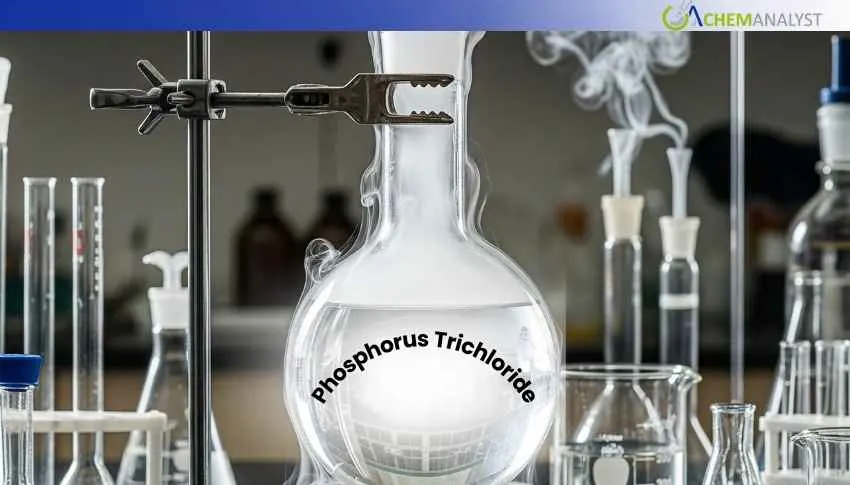Welcome To ChemAnalyst

Germany’s phosphorus trichloride market gained a modest lift in mid-August as European buyers resumed routine restocking, river transport on the Rhine improved, and policy clarity around glyphosate helped buyers plan more confidently. While the broader chemicals industry still struggles with weak demand and high costs, the phosphorus trichloride segment found support from stable feedstock costs and disciplined supply management. The near-term tone is cautiously firmer, though sustained gains will depend on steady autumn demand and a wider rebound in Europe’s industrial activity.
Germany's phosphorus trichloride market registered a modest bounce in mid-August, a contrast to the overall stagnation of Europe's chemical industry. The rebound, though not sensational, was the result of a mix of firm demand, supply-chain relief, and regulatory certainty that together provided the phosphorus trichloride market with a more solid foundation. For Germany, Europe's largest phosphorus trichloride exporter, the modest but perceptible bounce was a welcome indication of resilience.
Purchasers quietly advanced restocking of phosphorus trichloride in anticipation of the autumn season, benefiting from stable feedstock prices and improved transport conditions. The Rhine River, which had been recently hit by volatile water levels, finally stabilized, enabling barges to travel at full capacity. This relaxed delivery restrictions, improving supply chains to be more predictable, and reinstating buyer confidence. For a specialty chemical such as phosphorus trichloride, good transportation can make the difference between market reluctance and fresh buying.
A consistent downstream demand from agrochemicals was also a critical factor in the phosphorus trichloride market. Demand was not booming, but it was steady, especially following the decision of the European Union to renew glyphosate approval until 2033. This policy stability convinced buyers in the crop protection sector that they could proceed with regular orders instead of holding off on purchases. That level of confidence, albeit modest in volume, was sufficient to maintain phosphorus trichloride's demand at a stable level.
Nevertheless, the larger picture for Germany's chemical industry is still tough. Manufacturers throughout the sector still struggle to cope with slow industrial consumption, poor export flows, and continuing energy cost pressures. Industry chiefs warn that while the improved tone in phosphorus trichloride is a positive, it is an isolated bright spot and not a full-scale rebound. The overall sentiment within Germany's chemical industry is still guarded, reflecting the patchy nature of current market conditions.
However, phosphorus trichloride's position as an essential intermediate to agrochemicals, flame retardants, and specialty chemicals means its performance is worth observing. Its stability tends to be indicative of greater resilience in downstream markets, especially herbicides and pesticides, even when the economy as a whole seems unsteady.
Looking forward, ChemAnalyst statistics indicate a cautiously optimistic tone for the phosphorus trichloride market. Assuming autumn restocking persists and downstream manufacturers maintain their current stance, the stronger pricing may persist through September too. But without greater force in Europe's wider industrial cycle, scope for further escalation will remain limited. Ultimately, the sustainability of the trend will depend on the level of feedstock prices, ongoing regulatory consistency in agriculture, and Germany's capacity to ensure seamless export flows.
We use cookies to deliver the best possible experience on our website. To learn more, visit our Privacy Policy. By continuing to use this site or by closing this box, you consent to our use of cookies. More info.
